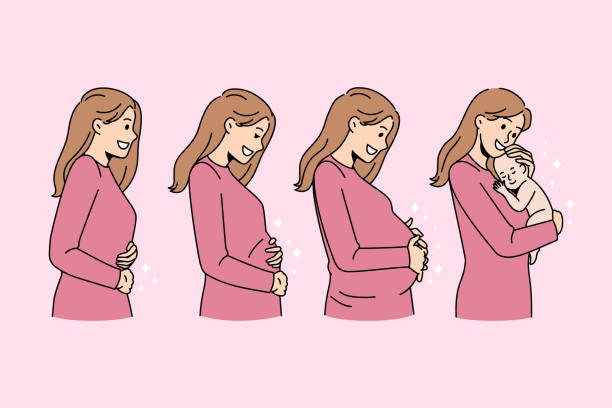Back
Pelvic Floor Therapy During Pregnancy
By Shannon Strauch, PTA, STMT-1 on 8/15/2024

Introduction
Pregnancy is a time of profound change for your body, and as your baby grows, so does the demand on your muscles and joints. One area that is particularly affected is the pelvic floor—a group of muscles that play a vital role in supporting your organs, maintaining continence, and aiding in childbirth. Engaging in pelvic floor therapy during pregnancy can offer numerous benefits, not only helping you prepare for a smoother birth experience but also setting the stage for a quicker postpartum recovery.
What is Pelvic Floor Therapy?
Pelvic floor therapy is a specialized form of physical therapy that focuses on strengthening and rehabilitating the muscles, ligaments, and connective tissues of the pelvic floor. These muscles support your bladder, uterus, and bowels, and they play a critical role during pregnancy and childbirth. Working with a pelvic floor therapist can help you ensure these muscles are functioning optimally throughout your pregnancy.
Benefits of Pelvic Floor Therapy During Pregnancy
Improved Muscle Strength and Endurance
: Pregnancy naturally places a lot of stress on the pelvic floor. Pelvic floor therapy helps you strengthen these muscles, which can reduce the risk of issues like urinary incontinence and pelvic organ prolapse, both during and after pregnancy.Preparation for Labor and Delivery
: A well-conditioned pelvic floor can aid in the birthing process. Therapy can help you learn how to relax and contract your pelvic muscles effectively, making it easier to manage the pushing phase of labor. This can lead to a more controlled and less traumatic delivery.Reduced Pregnancy-Related Discomfort
: Many pregnant women experience discomforts such as lower back pain, pelvic pain, and sciatica. Pelvic floor therapy can address these issues by improving posture, muscle balance, and overall pelvic alignment, making your pregnancy more comfortable.Prevention of Diastasis Recti
: Diastasis recti, the separation of the abdominal muscles, is common during pregnancy. Pelvic floor therapy includes exercises that support the abdominal muscles and minimize the extent of this separation, promoting better postpartum recovery.Enhanced Postpartum Recovery
: Strengthening the pelvic floor during pregnancy sets a strong foundation for postpartum recovery. Women who engage in pelvic floor therapy while pregnant often experience a quicker return to normal function, including better bladder control, less pelvic pain, and faster healing after delivery.Emotional and Mental Preparation
: Pregnancy can be an overwhelming time, and pelvic floor therapy also offers psychological benefits. By working with a therapist, you gain knowledge, skills, and confidence in your body's ability to manage labor and recover postpartum.
How Pelvic Floor Therapy Prepares You for Birth
Muscle Awareness and Control
: One of the key aspects of pelvic floor therapy is learning to identify and control your pelvic floor muscles. This awareness is crucial during childbirth, as knowing how to relax these muscles can help facilitate a smoother delivery.Breathing Techniques
: Therapy often incorporates breathing exercises that support the pelvic floor. Proper breathing can reduce tension and improve oxygen flow during labor, aiding in pain management and reducing stress.Perineal Massage Education
: Some pelvic floor therapists teach perineal massage, which can help stretch and prepare the perineum for childbirth, potentially reducing the risk of tearing.Labor Positioning
: Therapists can guide you in finding labor positions that are optimal for your body, helping to minimize strain on the pelvic floor and making the birthing process more efficient.
Postpartum Benefits
Pelvic floor therapy doesn't end with childbirth. Continuing therapy postpartum can address any issues that arise, such as urinary incontinence, pelvic pain, or prolapse. It also helps restore muscle strength and function, promoting a faster and more complete recovery.
When to Start Pelvic Floor Therapy During Pregnancy
It’s ideal to begin pelvic floor therapy early in your pregnancy, but it’s never too late to start. Even if you’re well into your third trimester, therapy can still provide significant benefits. Always consult with your healthcare provider before beginning any new treatment.
Conclusion
Pelvic floor therapy during pregnancy is an empowering way to prepare your body for the challenges of childbirth and postpartum recovery. By strengthening and conditioning your pelvic floor, you can reduce discomfort, enhance your labor experience, and set the stage for a quicker, smoother recovery after your baby is born. Consider incorporating pelvic floor therapy into your prenatal care routine—it’s an investment in your health and well-being, both during pregnancy and beyond. Reach out to us at Pelvic Health Center in Madison, NJ to set up an evaluation and treatment! Feel free to call us at 908-443-9880 or email us at receptionmadison@pelvichealthnj.com.
Read More:
How Chronic Pelvic Congestion in Men Contributes to Prostatitis By Shannon Strauch, PTA, STMT-1 on 12/11/2024 How lymphatic issues can cause symptoms of prostatitis Prostatitis and Tight Pelvic Floor Muscles: A Comprehensive Guide By Shannon Strauch, PTA, STMT-1 on 12/10/2024 How a tight pelvic floor can be the reason for prostatitis symptoms
Are you ready to live pain free?
Request An Appointment